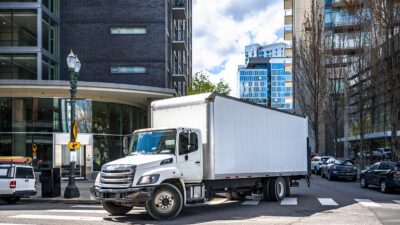The demand for food delivery options is at an all-time high, as the food service industry innovates its offering to consumers with convenience and diversity of selections. Research firm Cowen and Co. predicts that U.S. restaurant delivery sales will rise an average of 12% a year to $76 billion in the next four years, with an increased percentage of food delivery app downloads — up by 380%over the past three years. Consumers will relish the opportunity to have food delivered when and where they want it, posing an interesting dilemma for existing full-service and quick-service restaurants to innovate beyond their typical brick-and-mortar footprints. In this article, we discuss some examples of how the industry is expanding into the relative unknown to bring the kitchen-to-table concept closer to consumers.
Consumers are busier than ever, actively seeking brands and services that create ease in their everyday lives. According to Nielsen, easy-to-use, automated, intelligent and digitized options are at the top of their list. This is especially relevant for food delivery and restaurant businesses. The idea of streamlining food delivery to consumers is far from a new concept. From the heyday of the mid-twentieth century, when Horn and Hardart’s Automats provided quick food options to NYC’s workforce to Homegrocer’s foray into online grocery shopping and today’s food delivery wars vying for consumer attention.
Earlier this year, we predicted Alibaba’s disruption to retail and its potential to influence brand innovation. The most notable results have been in the restaurant and food service vertical. Hema, Alibaba’s food concept, integrates robotics and A.I. into the consumer experience where a mobile app takes your order, bots serve your food and most of the human interaction happens behind the scenes in the kitchen. This technological innovation leverages every transaction from product research to payment selection, to create a seamless and convenient experience for the consumer.
Eatsa, a San Francisco startup, attempted to do something similar with their “robot-run” fast food cafes. Similar to Hema, customers would order their menu choices from a digital kiosk and then pick up their food from a wall of individualized cubbies. Folks loved the ease of its point of sale technology, something the founders of Eatsa, now Brightloom, could chew on. The company pivoted its business model to provide automation technology for restaurants big and small. In addition to working with local eateries like Wow Bao, Brightloom has partnered with Starbucks to integrate the coffee giant’s digital flywheel technology into an end-to-end seamless platform for restaurants.
The availability of automated technologies has incentivized restaurateurs to think outside the box, starting digital-only establishments, aka virtual restaurants, or operating ghost kitchens. Virtual restaurants are associated with a restaurant’s physical location but manage a special menu for online orders. Restaurants accessible in-app through UberEats or GrubHub fulfill consumers’ mobile orders.
Ghost kitchens, on the other hand, operate without a definitive retail presence. Take Kitchen United, which provides commercial kitchens for use by a collective of restaurant operators to prep food for pickup or delivery, all from one location. The business model is a money-saver for restaurant tenants looking to streamline operations as they grow. On the front-end, consumers place their orders online via desktop or mobile, mixing and matching their meals from the available restaurants. Currently available in Pasadena and Chicago, Kitchen United has aggressive expansion plans to open 400 stores by 2024, thanks to a $10 million investment from G.V., the investment arm of Alphabet Inc. As food startups continue to serve up ideas, investors have become more attentive. WeWork announced plans to launch Food Labs, an accelerator program that provides space (but no commercial kitchens) for folks developing food-related enterprises.
The food delivery business is poised to generate $50 billion in revenue, with an estimated growth of 20%year over year to reach $365 billion worldwide by 2030 — staggering numbers when you consider that 60% of U.S. consumers order delivery or takeout once a week. Bloomberg has seen a downsizing trend of restaurant seating space, as chains experience less foot traffic and more online and mobile-ordered pickups. Food halls represent a less risky endeavor for boutique entrepreneurs. Rather than leasing month-to-month, food service operators plug and play into dedicated locations with ample growth opportunity and a higher ratio of pedestrian traffic per square foot. The concept represents an innovation in commercial leasing as e-commerce expands more rooted in food delivery and beyond the kitchen.
Have a favorite food hall experience you want to share? Join the conversation online and follow me on Twitter for regular updates and musings about commercial real estate and the retail industry.
About the Author:
Anjee continues to be an insatiable enthusiast of all things retail. She’s a student of culture with a pulse on future shoppers and the fleeting trends constantly changing the retail landscape…driving retailers, landlords and developers crazy!

 Anjee Solanki
Anjee Solanki


 Lauren Pace
Lauren Pace Craig Hurvitz
Craig Hurvitz Ronna Larsen
Ronna Larsen
 John Scott
John Scott Jacob Pavlik
Jacob Pavlik